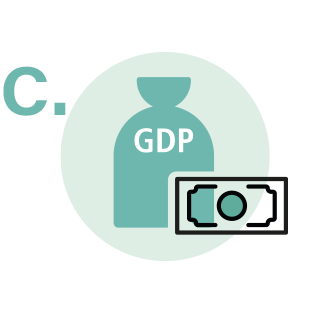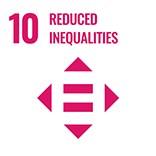Building climate resilience of vulnerable and food insecure communities through capacity strengthening and livelihood diversification in mountainous regions of Tajikistan

Summary
Initiated in 2008, this solution aims to increase climate resilience and improve the adaptive capacities of some of the most vulnerable and food-insecure mountain communities in the Rasht Valley, Khatlon, and Gorno-Badakhshan Autonomous Region (GBAO) regions of Tajikistan.
The project is being implemented in 11 mountainous districts classified as highly vulnerable to climatic impacts such as floods, avalanches, landslides, and droughts. Combined with high levels of poverty and limited availability of arable land, these impacts are affecting the agricultural sector and threatening the food security of local populations.
This solution addresses the main structural, institutional, and financial barriers to adaptation. It targets limited adaptive capacity, high dependence on climate-sensitive income sources, lack of awareness of climate change and its impacts, and the absence of strong local user associations to manage common resources. Its interventions are designed from an integrative approach and are contained in two mutually reinforcing components:
- Capacity strengthening and awareness-raising of food insecure climate-vulnerable communities and national actors for enhanced rural resilience and food security.
- Resilience building at household and community level through diversification of livelihoods and improved market access.
Overview
- Location:
- Implementation sites:
-
- Single country
- Multiple locations
- Mountain region:
-
Pamir Mountains
- Province:
-
- Rasht valley, Khatlon and Gorno- Badakhshan Autonomous Region (GBAO) regions.
- Solution scale:
- Ecosystem type(s):
- Solution type(s):
- Sector(s):
- Climate impact(s) addressed:
- Climate impact time-scale(s):
- Main benefit associated with the solution:
- Co-benefit(s) associated with the solution implementation:
- Implementation timeline:
-
- 2018 - 2022
Solution details
Main beneficiaries & outcomes
Around 120,000 food-insecure people from rural areas of the targeted regions are expected to benefit from the project. Outputs include the introduction of agroforestry activities for soil stabilization and regeneration, livelihood diversification initiatives, and improved climate information services. Drinking water points, warehouses, greenhouses, biodigesters, and drip irrigation will also be installed. Although the benefits are widely available, the project seeks to pay particular attention to both the empowerment of women and the protection of indigenous and marginalized groups.
Planning and implementation
This initiative is being implemented by the Committee on Environmental Protection of Tajikistan and the United Nations World Food Program (WFP). To facilitate coordination, a National Steering Committee and a Project Management Unit have been established at the national level, while a District Implementation and Monitoring Committee and a Project Management Committee supervise actions at the district and village levels. Beneficiary groups have also been formed and are actively involved in carrying out activities.
Community consultations, institutional assessments, and capacity needs assessments supported the decision-making and solution design during its planning phase.
Finance
The necessary funding for the project is provided by the Green Climate Fund (GCF) through a grant of USD 9,273,586 and co-financed by the Government of Tajikistan with a grant of USD 699,404. In addition, the participating communities are also contributing with informal parallel co-financing in the form of construction materials and tools (pipes, gabions, diesel fuel, tractor rental, etc.) for an estimated amount of USD 250,000.
Innovation
Because it is a specific climate change adaptation project that addresses food security issues as well as other related challenges, this solution is considered innovative for Tajikistan. According to the project funding proposal, the measures being applied represent a unique approach that differs from previous WFP interventions in the country.
Performance evaluation
The performance of the project is being constantly monitored in accordance with WFP procedures and under its supervision. This includes semi-annual implementation reports, technical reports, a project inception workshop, and annual progress reports. A mid-term evaluation and a final external evaluation will also be conducted by independent evaluators.
Long term project sustainability and maintenance
Several strategies aim to enable the sustainability of the project’s benefits. At the community level, for example, training and capacity building of local management committees, such as water user associations, women’s associations, and farmers’ associations, aims to ensure ownership of activities and facilitate maintenance efforts. At the institutional level, adaptation plans will be integrated into district development plans so that district development committees are legally committed to ensuring assets maintenance.
Capacities for design and implementation
Knowledge
The design and implementation of this solution benefited from the knowledge of best practices gained from previous projects in Tajikistan, such as the Environmental Land Management and Rural Livelihoods Project (2013- 2018), Tajikistan second public employment for sustainable agriculture and water resources management project (2012-2020), and the Climate Adaptation and Mitigation Program for the Aral Sea Basin (2016 -2022). It draws on the extensive experience of WFP and regional NGOs, such as FOCUS, in the country, and was designed in consultation with communities, stakeholders, all relevant authorities, and experts familiar with the target areas and communities.
The Review of Climate Risks and Food Security in Tajikistan, and the 2015 Integrated Context Analysis served as key information tools to identify target areas and their corresponding needs, while WFP’s Vulnerability Analysis and Mapping (VAM) supported evidence-based geographical focus.
Technology
The two project components include in their activities the use of available (mainly low-cost) technologies. In component 1, for example, cell phone technology will be employed to distribute and receive advisories and warnings, while in component 2, solar panels will serve for domestic power generation and heating, and greenhouses will be installed to support production during extreme weather conditions. The use of satellite imagery is also planned for the monitoring of some assets, such as those for which changes in vegetation cover are an indicator.
Political / Legal
The solution is supported by various entities of the Government of Tajikistan and benefits from the existing legal framework and strategies. Among the most relevant policies and strategies guiding the project are the Concept of Transition to Sustainable Development (2007–2030), the State Environmental Program (2009–2019), the National Strategy on Disaster Risk Management, the National Climate Change Adaptation Strategy (NCCAS), and a series of strategies related to the environment, such as the social protection and environmental protection in the context of climate change mitigation and adaptation. This last covers priorities identified on the National Development Strategy for 2016-2030.
Institutional
Collaboration and communication among all stakeholders at different levels were very useful for the development of the project and its two components. In addition to the organizational framework described above, a relevant aspect was the creation of an Implementation Group by the Executing Agency. This group is responsible for supervising and coordinating the implementation, monitoring, and evaluation of the solution and executing the necessary agreements with the local government units. In addition, it also leads procurement activities, including the management of supply and service contracts with suppliers.
Socio-cultural
Local communities are being involved in the project through participatory, cultural, and gender approaches that aim to reinforce their strong collaborative culture so that they can effectively address climate-related challenges. They actively participate in the development and implementation of project activities and will receive cash or vouchers for the creation of certain assets.
Outlook & Scalability
Barriers and adverse effects
The main barriers initially identified during the planning process and that the project seeks to address are: lack of access to and awareness of the use of climate services by vulnerable populations for adaptation planning, low awareness of climate change and its impacts on livelihoods and nutrition, limited adaptive capacities of communities, limited knowledge and capacities at the government level, dependence on climate-sensitive income sources, increased losses and damages due to weak community and household assets, loss of income in rural areas due to lack of information and market linkages, and lack of strong user associations at the community level to manage common assets. Although information on the performance of the solution is not yet available, it is expected that the measures implemented will result in the improvement of all these initial conditions.
No adverse effects on population are expected.
Transformation and future outlook
This project seeks to achieve a fundamental shift in climate change adaptation by promoting climate-resilient sustainable development and by providing the necessary knowledge and skills at different levels of decision-making in the country. It supports the mainstreaming of climate adaptation into national development plans and institutionalizes knowledge generation and learning by incorporating climate change and food security into national and district-level planning processes. Furthermore, it aims to trigger social and behavioral changes.
Potential for upscaling and replication
The planning and design of this solution have been conceived in line with a theory of change so that the project results can be sustained, replicated, and scaled up to other regions of Tajikistan. It is estimated that overall, the impacts achieved can be scaled up to 100% national coverage.












Comments
There is no content